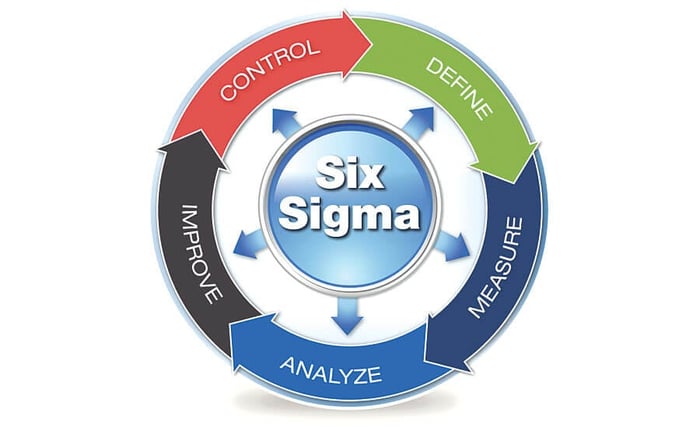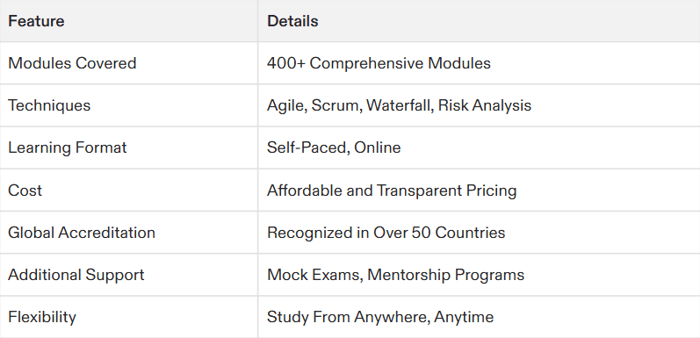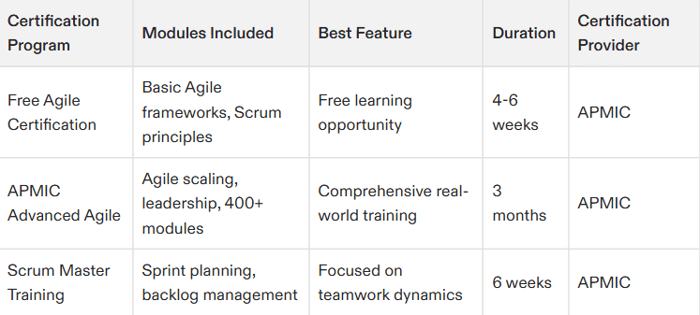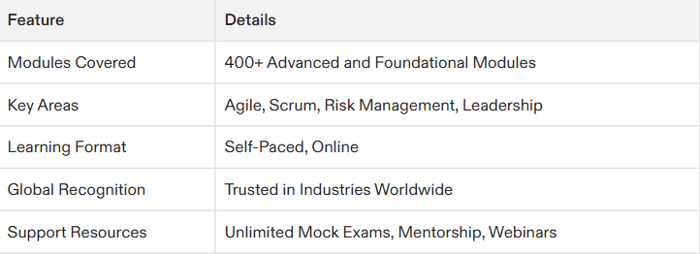Table of Contents
- Introduction: The Secret Weapon to a High-Powered Career
- What Is Project Management Certification Six Sigma?
- Why Is Project Management Certification Six Sigma Essential in 2025?
- Which Six Sigma Certifications Are Best for Project Managers?
- How APMIC Revolutionizes Project Management Certification Six Sigma
- Real-World Case Studies of Six Sigma in Project Management
- How Six Sigma and Agile Work Together in Project Management
- Common Mistakes When Implementing Six Sigma in Projects
- Six Sigma Tools and Software for Project Management
- Six Sigma in the AI and Automation Era
- Six Sigma vs. Other Project Management Certifications
- Less Commonly Known Facts About Six Sigma
- Final Thoughts
- FAQs
Introduction: The Secret Weapon to a High-Powered Career
Imagine running a project so smoothly that your boss thinks you have superpowers. Now, imagine combining that with Six Sigma—the gold standard for eliminating inefficiencies. That’s not just career growth; that’s career domination! In 2025, the Project Management Certification Six Sigma isn’t just a fancy title; it’s your ticket to high-paying roles, global recognition, and becoming the workplace genius everyone turns to. Buckle up, because this guide will make you the master of project execution.
What Is Project Management Certification Six Sigma?
Project Management Certification Six Sigma is the ultimate combination of structured project execution and process improvement. Six Sigma methodologies focus on eliminating errors and improving efficiency, while project management ensures goals are achieved within scope, time, and budget.
This powerful certification equips professionals with skills to reduce waste, boost efficiency, and ensure flawless project execution across industries. In a competitive job market, having both these skill sets is like having an ace up your sleeve.
Core Components of Project Management Certification Six Sigma
Define-Measure-Analyze-Improve-Control (DMAIC): Used for optimizing existing processes.
Define-Measure-Analyze-Design-Verify (DMADV): Ideal for designing new processes or products.
Lean Six Sigma: A fusion of Lean methodologies and Six Sigma principles to drive maximum efficiency.
Process Optimization Tools: Includes Fishbone Diagrams, Pareto Charts, and Root Cause Analysis.
Why Is Project Management Certification Six Sigma Essential in 2025?
The demand for professionals with Six Sigma project management skills has skyrocketed, especially in industries like IT, healthcare, finance, and logistics. Companies are desperate for individuals who can cut costs and maximize efficiency. Let’s break down why this certification is a game-changer.
1. High Demand Across Industries
Six Sigma-trained project managers are needed in every industry, from manufacturing to tech startups and even government projects.
2. Global Career Advancement
Six Sigma is recognized worldwide, making it easier to land opportunities across borders.
3. Higher Salary Potential
According to Glassdoor, certified Six Sigma project managers earn up to 20% more than their non-certified counterparts.
4. Business Impact
Companies that implement Six Sigma methodologies experience cost reductions of 30-50%, making Six Sigma-certified professionals invaluable.
5. Future-Proof Your Career
With automation and AI taking over routine tasks, Six Sigma expertise ensures you stay ahead by handling complex problem-solving roles.
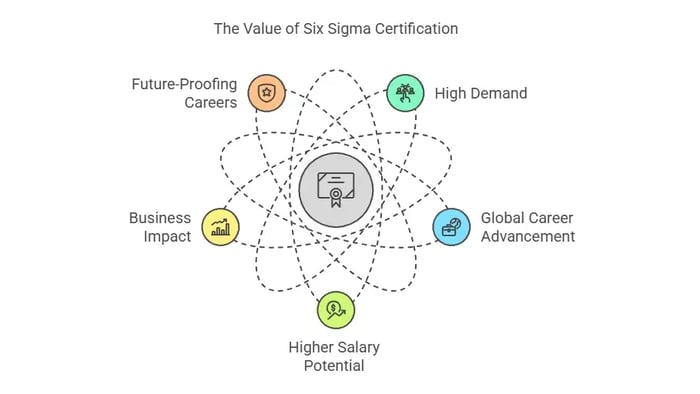
Which Six Sigma Certifications Are Best for Project Managers?
Depending on experience and career goals, project managers can pursue:
Yellow Belt (Beginner) – Basic understanding of Six Sigma methodologies.
Green Belt (Intermediate) – Leads small projects with Six Sigma principles.
Black Belt (Advanced) – Manages large-scale projects and mentors teams.
Master Black Belt (Expert) – Develops Six Sigma strategies and leads enterprise-wide initiatives.
A detailed breakdown of different Six Sigma belt levels and how they impact career growth.
| Six Sigma Level | Skills Acquired | Ideal For | Average Salary Increase (%) |
|---|---|---|---|
| Yellow Belt | Basic knowledge, process improvement fundamentals | Beginners, team members | 5-10% |
| Green Belt | Project execution, data analysis, DMAIC methodology | Mid-level professionals | 10-20% |
| Black Belt | Leadership in Six Sigma projects, advanced analytics | Project managers, leaders | 20-30% |
| Master Black Belt | Enterprise-level strategy, mentoring, Lean Six Sigma | Executives, senior managers | 30%+ |
Combining any of these with a recognized Project Management Certification enhances credibility and marketability.
Key Takeaways
- Yellow Belt offers an affordable entry point, allowing professionals to grasp Six Sigma basics with quick ROI.
- Green Belt provides significant salary hikes, making it a popular choice among mid-level professionals.
- Black Belt ensures long-term career growth with high-level managerial roles and substantial salary increases.
- Master Black Belt is ideal for senior executives seeking to implement Six Sigma at an enterprise level.
How APMIC Revolutionizes Project Management Certification Six Sigma
The APMIC certification is one of the most comprehensive programs available, offering:
400+ Industry-Aligned Modules covering everything from Lean Six Sigma to Agile project management.
Real-World Application through case studies, simulations, and interactive tools.
Global Accreditation ensuring worldwide job opportunities.
Flexible Learning Options (Self-paced, live sessions, and corporate training programs).
Bonus: You can now enroll in APMIC’s Top-Rated Certification Program.
Real-World Case Studies of Six Sigma in Project Management
Companies worldwide have embraced Six Sigma principles to drive efficiency and success. Here are a few real-world examples:
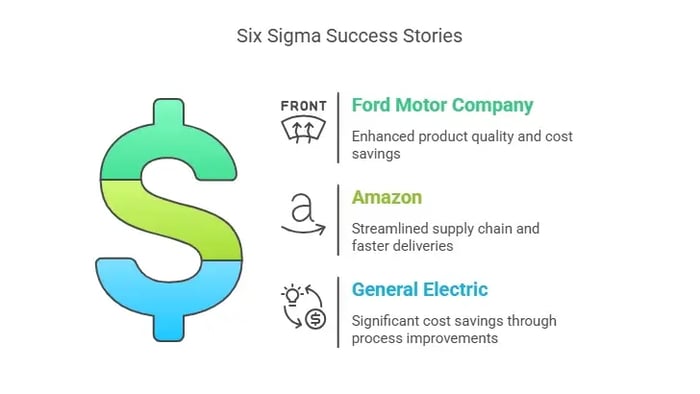
✅ Ford Motor Company: Implemented Six Sigma to enhance product quality and reduce manufacturing defects, leading to millions in cost savings.
✅ Amazon: Used Six Sigma methodologies to streamline supply chain processes, ensuring faster delivery times and reduced operational costs.
✅ General Electric (GE): One of the pioneers of Six Sigma, GE saved $12 billion through process improvements and defect reduction.
How Six Sigma and Agile Work Together in Project Management
While Six Sigma focuses on eliminating errors and optimizing processes, Agile emphasizes flexibility and rapid iteration. When combined, these methodologies create a powerhouse framework for effective project management.
🔹 Scrum and DMAIC: Scrum’s iterative approach aligns well with Six Sigma’s DMAIC process, ensuring continuous improvement with every sprint.
🔹 Lean Six Sigma in Agile: Agile teams can use Lean Six Sigma to identify bottlenecks and inefficiencies, leading to improved workflow and faster delivery.
Example: Software development teams use Six Sigma analytics to measure defect rates while applying Agile’s flexibility to quickly adapt and improve.
Common Mistakes When Implementing Six Sigma in Projects
Many organizations struggle to implement Six Sigma effectively. Here are some common mistakes:
❌ Lack of Leadership Support: Without executive buy-in, Six Sigma projects often fail to get the resources needed.
❌ Overcomplicating Processes: Six Sigma is about efficiency, but excessive data collection or rigid structures can slow down progress.
❌ Resistance to Change: Employees unfamiliar with Six Sigma may resist new methodologies unless properly trained and informed.
Solution: A phased implementation with training programs can ease the transition and ensure better adoption.
Six Sigma Tools and Software for Project Management
Using the right tools can enhance Six Sigma implementation. Some popular tools include:
🛠 Minitab – Advanced statistical analysis for Six Sigma projects.
🛠 JMP – Data visualization and predictive analytics.
🛠 Trello & Asana – Workflow management for Six Sigma teams.
🛠 Six Sigma Calculator – Quick calculations for defect rates and process improvement metrics.
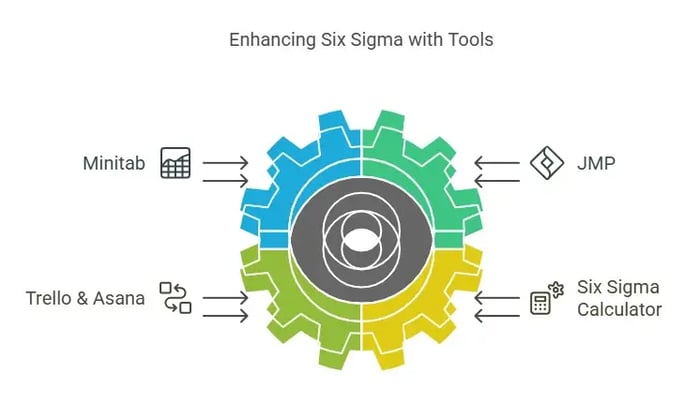
To enhance your Six Sigma learning experience, you can download Minitab software—a powerful statistical tool used for Six Sigma analysis, data visualization, and process improvement.
Six Sigma in the AI and Automation Era
AI and automation are transforming project management. Here’s how Six Sigma remains relevant:
🤖 AI-Powered Data Analysis: Machine learning algorithms can detect inefficiencies faster than traditional Six Sigma methods.
🤖 Automated Process Control: Businesses use AI-driven Six Sigma models to predict and prevent process failures before they happen.
Example: Healthcare institutions apply AI-driven Six Sigma to reduce patient wait times and improve hospital efficiency.
Six Sigma vs. Other Project Management Certifications
While Six Sigma is widely recognized for process optimization and defect reduction, other project management certifications—such as PMP, PRINCE2, Agile, and APMIC—offer unique advantages depending on industry requirements. Understanding their differences helps professionals choose the most suitable certification for their career path.
Comparison Table: Six Sigma vs. Other Certifications
| Certification | Focus Area | Best For | Exam Difficulty | Industry Demand |
|---|---|---|---|---|
| Six Sigma | Process improvement, defect reduction | Operations, quality management | Medium | High |
| PMP (Project Management Professional) | Project execution, leadership | Project managers | High | Very High |
| PRINCE2 | Structured project framework | European & global professionals | Medium | High |
| Agile (Scrum, SAFe, etc.) | Flexible, iterative project management | Software development, IT | Low - Medium | High |
| APMIC (Associate in Project Management & Innovation Certification) | Innovation-driven project management | Entry-level & innovation-focused roles | Low | Growing |
Which Certification Should You Choose?
- Choose Six Sigma if you work in operations, manufacturing, or quality management and want to enhance efficiency by reducing defects.
- Opt for PMP if you want to specialize in managing large-scale projects with strict budgets, resources, and timelines.
- Go for PRINCE2 if you need a structured project management framework, especially in European and international markets.
- Select Agile if you work in IT, software development, or any industry that benefits from flexible, iterative workflows.
- Consider APMIC if you are an entry-level professional looking to develop innovation-oriented project management skills.
Each certification offers unique career benefits, and the best choice depends on industry requirements and personal career goals.
Less Commonly Known Facts About Six Sigma
- Six Sigma was inspired by Japanese manufacturing techniques. Toyota’s Lean principles heavily influenced the Six Sigma methodology. Lean Manufacturing
- Six Sigma was initially created for Motorola. In 1986, Motorola developed Six Sigma to improve manufacturing quality. Motorola History
- GE saved $12 billion using Six Sigma. General Electric credited Six Sigma for massive cost reductions and efficiency improvements. GE Case Study
- Six Sigma reduces medical errors in hospitals. Hospitals have successfully used Six Sigma to reduce surgical errors and patient wait times. NIH Study
- Amazon uses Six Sigma for logistics efficiency. The retail giant employs Six Sigma to optimize shipping times and reduce package damage. Amazon Operations
- Six Sigma was used in NASA projects. NASA leveraged Six Sigma principles to enhance risk management in space missions. NASA Report
- The U.S. Army applies Six Sigma for logistics. The military integrates Six Sigma to improve supply chain efficiency and operational readiness. Army Logistics
- Banking institutions leverage Six Sigma for fraud detection. Major banks apply Six Sigma analytics to minimize fraudulent transactions. Financial Fraud Prevention
- Coca-Cola improved production efficiency with Six Sigma. The beverage giant enhanced manufacturing quality and reduced waste through Six Sigma methodologies. Coca-Cola Sustainability
- McDonald's applies Six Sigma for food consistency. The fast-food leader maintains quality control by using Six Sigma in kitchen processes.
Final Thoughts
If you’re serious about career growth in 2025, mastering Project Management Certification Six Sigma is non-negotiable. The combination of project execution and process efficiency makes you an invaluable asset in any industry.
Want to fast-track your success? The APMIC certification offers 400+ industry-aligned modules, real-world simulations, and global accreditation to ensure you stand out in the job market.
Get the Best Project Management Certification Now!
FAQs
What is the best certification for project managers in 2025?
The Project Management Certification Six Sigma remains the best due to its blend of project execution expertise and process optimization.
How long does it take to get Six Sigma certified?
Depending on the level, certifications can take 2 weeks to 6 months, with APMIC offering self-paced modules.
Is Six Sigma still relevant in 2025?
Absolutely! With AI and automation increasing, process efficiency and error reduction are more crucial than ever.
Does Six Sigma increase salary?
Yes! Six Sigma-certified project managers earn 20-30% higher salaries, according to Payscale.
Which industries need Six Sigma project managers the most?
Industries like healthcare, IT, manufacturing, and finance are actively hiring Six Sigma-certified professionals.
Can I get a job with just a Six Sigma certification?
While a Six Sigma certification is a huge advantage, combining it with project management skills increases job prospects significantly.
Are there free Six Sigma certification courses?
Some platforms offer basic Yellow Belt training for free, but advanced certifications require investment for proper accreditation.
What is the hardest part of Six Sigma training?
Mastering statistical tools like Regression Analysis and Control Charts can be challenging, but APMIC’s hands-on training simplifies the learning curve.

